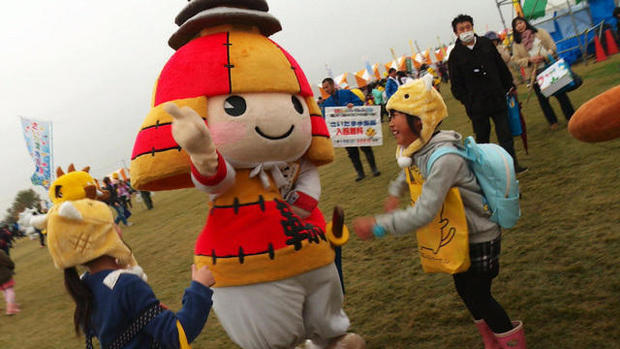How cute and cuddly mascots generate billions in Japan
HANYU, Japan -- They’re kooky, cuddly – and for some – a little creepy.
In Japan, mascots aren’t warm-up acts. They’re the main event, reports CBS News correspondent Adriana Diaz.
It’s been dubbed the capital of cute, and at the World Character Summit outside Tokyo, you can see why.
“You can love mascots just like people,” Miya Naruse told us. “Everything about them is cute.”
Cuteness, or kawaii in Japanese, dominates pop culture. That’s why from young to old, the Japanese are smitten. But don’t be fooled, mascots are master salesmen. By one estimate, the character business generates nearly $16 billion a year.
Danny Choo, son of shoemaker Jimmy Choo, makes a living off his doll-like mascot named Mirai. She’s an official tourism ambassador for Japan, appearing on planes and buses. Choo said in Japan, mascots are an essential marketing tool.
“Whether it’s like for branding or to like bring in new customers… folks who like a particular character, they will go and buy those goods,” Choo said.
The government alone has thousands of them. Take Pipo-kun, a member of Tokyo police, or the bowl-shaped toilet-kun, with waste management. There’s also the disarming Waka-P, who promotes a prison, of all things, and not one to be left out, Tom, the U.S. embassy mascot.
But for every D-lister, some hit it big and cash in. The feisty Pear Funassyi earns millions a year through merchandizing. It even has a hit single.
Domo, the mascot for Japan’s public broadcaster, has appeared in U.S. ads for 7-Eleven and Target.
But when it comes to celebrity, Kumamon is king. The official mascot for Kumamoto Prefecture has more than half a million Twitter followers and has generated billions through tourism and bear-related products.
So, how does one become a mascot? There’s a school for that. Owner Choko Ohira is a mascot veteran.
“It’s common knowledge that when you want to draw a crowd, use a mascot,” Ohira said. “So lots of companies and organizations are creating their own to boost their profile.”
She teaches exaggerated moves that will work under heavy suits, and the non-negotiable mascot code: never break character, or admit there’s a human inside. That’s why we weren’t allowed to film them suiting up.
Shinji Kumamoto, 51, gave up computer programming for a mascot career.
“In my regular life, I’m just a middle-aged guy,” Kumamoto said. “But in costume…I can forget myself and be someone else.”
“If you can make the mascot move like it’s alive, then there’s no deception,” Ohira said. “But that requires proper technique.”
Hard work that generates billions, but the currency of smiles and hugs may have no match.




